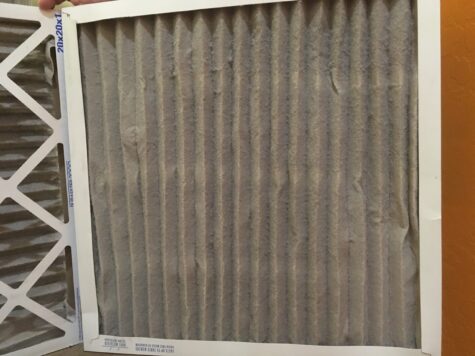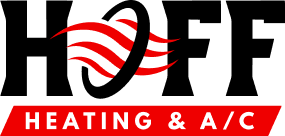Energy Efficiency and Indoor Air Quality: Friends or Foes?

There has been lots of debate in recent years about the link between a building’s energy efficiency and its indoor air quality and whether you can really ever have high energy efficiency and high air quality at the same time. There’s plenty of evidence that directly shows that improved energy efficiency often leads to a decrease in indoor air quality. The good news is that it doesn’t always have to, as you can have a home that’s extremely energy-efficient without having to worry about air quality. In this guide, we’ll discuss the ways that energy efficiency and air quality are often related and what options you have for improving either one without having to sacrifice the other.
How Improved Energy Efficiency Can Negatively Affect Indoor Air Quality
Construction practices and building materials have vastly improved in the past few decades. These advancements have allowed modern buildings to be far more energy-efficient, which is obviously important for saving homeowners money and lessening the environmental impact of their homes. Unfortunately, the improved energy efficiency of modern buildings has also resulted in them having more indoor air quality issues.
Older buildings aren’t poorly built per se, but most of them definitely aren’t all that energy-efficient. This is partly because traditional building materials, like insulation and roof underlayments, aren’t that great at holding heat in or keeping heat or cold out. Most older buildings are also simply not built that tightly, which means the underlying exterior structure, including the roof, walls, and foundation, has numerous places where air can flow in and out. These factors result in the building being less energy-efficient. This tends to result in lots of heat gain in warmer weather while also allowing heat to escape and cold air to seep inside during the winter months. Sealing up the air leaks and adding more insulation to the building will help to improve its energy efficiency, but it will also typically make the air quality in the property worse.
The reason is that all of the air leaks and structural gaps have the positive benefit of helping to keep the air quality inside the house better. The gaps and leaks ensure that air can constantly flow in and out of the building. This prevents the air inside from becoming stale and allows the indoor air pollutants to easily escape while also bringing clean air inside.
As air flows out of a building, it creates an imbalance between the air pressure indoors and the air pressure outside. Air always wants to be an equilibrium or equal pressure. Whenever there’s a pressure imbalance, air naturally flows from a high pressure area to the lower pressure area. This means that as stale air flows out of the building, fresh air automatically flows in from outside so that there’s again a balance.
This process typically can’t happen with newer buildings, as the materials they use and the way they’re constructed minimize the amount of gaps and air leaks in the structure. As a result, they typically need a mechanical ventilation system to replenish the air in the building and prevent it from becoming overly stale. This ensures indoor air pollution doesn’t become a major problem. Either that or they need some type of air purification system that works to clean the air and filter out airborne pollutants and contaminants. If there’s no way for the air to escape, the humidity level would also quickly start increasing due to all of the moisture and heat that people naturally give off.
How Ventilation Can Impact Energy Efficiency and Indoor Air Quality
Ensuring that a building is properly ventilated and that the air inside it can easily be exchanged or replenished will always help to improve its air quality. Ventilation may also make it more energy-efficient. However, ventilation can also decrease energy efficiency when not used correctly or if the right ventilation system isn’t installed. Some ventilation systems simply draw air out and replace it with fresh air.
As long as the outside air is filtered on the way in, this type of system would definitely help to overcome issues with airborne pollution. The only problem is that it would also tend to make the building less efficient and result in its heating and cooling systems working harder and consuming more energy. This is because the ventilation system would pull hot air in during the summer. This would cause the building to heat up more quickly and also lower the temperature in the winter by pulling cold air in.
Heat recovery ventilation (HRV) and energy recovery ventilation (ERV) systems avoid this issue. Both of these ventilation systems work on the process of heat transfer, which means they don’t just pull air in and out. Instead, ERVs and HRVs have a built-in heat exchanger that captures and transfers heat. When the outdoor air temperature is higher than the indoor temperature, the system will transfer all of the heat in the air it draws inside to the air it pulls out of the building. The process then works oppositely in cooler weather. The system transfers heat and raises the temperature of the cool air as it comes inside the building.
Both ERV and HRV systems are great options for boosting air quality. They also don’t use all that much energy. This means they’ll keep the air cleaner and fresher without much of a negative impact on the house’s energy efficiency or energy usage. ERV systems are even more advanced since they also transfer moisture instead of just heat. This means that the system will pull moisture out of the air coming inside and essentially dry it out to prevent the indoor humidity level from increasing. By helping to limit the humidity level inside of the building, an ERV system can actually make it more energy-efficient, as air conditioning systems always cool more slowly and have to work harder when there’s lots of moisture in the air.
How Air Purification Can Impact Energy Efficiency
The building code in most places requires that many new commercial properties have mechanical ventilation, but it isn’t necessary in all homes. Instead, you’re sometimes better off installing a whole-home air purification system or filtration system. In fact, this type of system can be a great help even in buildings with mechanical ventilation. Essentially, it improves energy efficiency by making it so that the ventilation system doesn’t need to run constantly.
It’s almost always more energy-efficient to simply clean the air inside of a building instead of constantly exchanging and replenishing it. One issue with mechanical ventilation is that most systems don’t have a very effective air filter. The filter will trap dust and other larger particles to keep them from clogging up the ventilation system’s fans. However, lots of smaller particles like exhaust fumes and pollen will often pass right through the filter and get drawn inside.
This is where whole-home air purifiers and air filters can be a huge help since they can capture the majority of smaller airborne pollutants, allergens, and contaminants. These systems also use very little energy, so they’ll greatly improve air quality without causing much of an increase in your utility bills. Some studies have shown that they can actually make your HVAC system more efficient by minimizing the amount of dust and particles that flow through the system. These particles can clog up the filter, blower, and furnace burners or coat the AC evaporator coil.
How We Can Help
Hoff Heating & AC is a top-rated HVAC contractor specializing in indoor air quality services in O’Fallon and the St. Louis metro area. We service and install a full range of IAQ equipment, including air purifiers, filtration and ventilation systems, humidifiers, dehumidifiers, and UV lights. We can also take care of your heating and cooling installation, repair, and maintenance needs to ensure your HVAC system is as energy-efficient as possible. For more information on the ways you can improve both the energy efficiency and indoor air quality of your home, give us a call today.

 Call Us Today
Call Us Today
